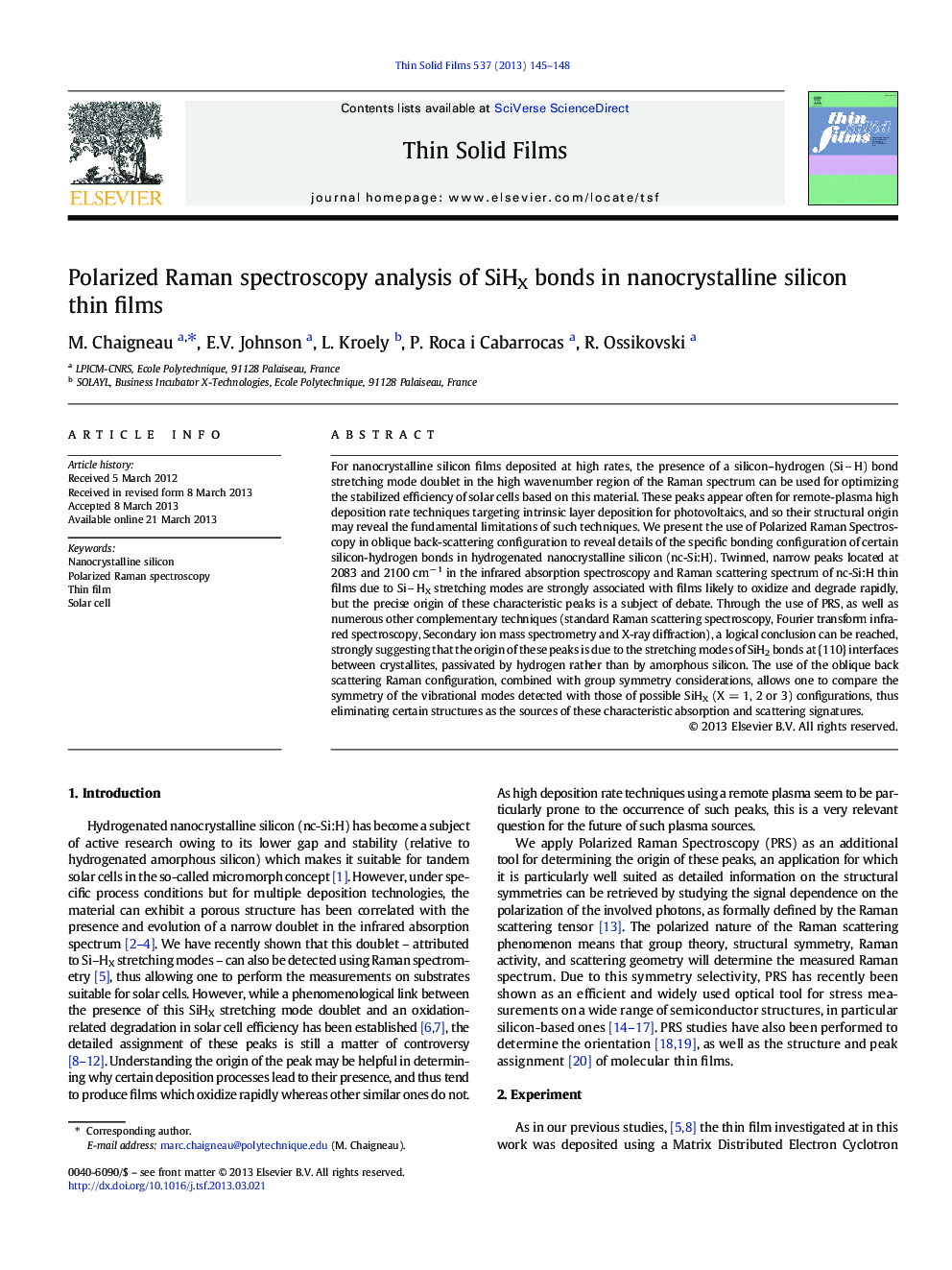| Article ID | Journal | Published Year | Pages | File Type |
|---|---|---|---|---|
| 8036650 | Thin Solid Films | 2013 | 4 Pages |
Abstract
For nanocrystalline silicon films deposited at high rates, the presence of a silicon-hydrogen (SiH) bond stretching mode doublet in the high wavenumber region of the Raman spectrum can be used for optimizing the stabilized efficiency of solar cells based on this material. These peaks appear often for remote-plasma high deposition rate techniques targeting intrinsic layer deposition for photovoltaics, and so their structural origin may reveal the fundamental limitations of such techniques. We present the use of Polarized Raman Spectroscopy in oblique back-scattering configuration to reveal details of the specific bonding configuration of certain silicon-hydrogen bonds in hydrogenated nanocrystalline silicon (nc-Si:H). Twinned, narrow peaks located at 2083 and 2100 cmâ 1 in the infrared absorption spectroscopy and Raman scattering spectrum of nc-Si:H thin films due to SiHX stretching modes are strongly associated with films likely to oxidize and degrade rapidly, but the precise origin of these characteristic peaks is a subject of debate. Through the use of PRS, as well as numerous other complementary techniques (standard Raman scattering spectroscopy, Fourier transform infrared spectroscopy, Secondary ion mass spectrometry and X-ray diffraction), a logical conclusion can be reached, strongly suggesting that the origin of these peaks is due to the stretching modes of SiH2 bonds at {110} interfaces between crystallites, passivated by hydrogen rather than by amorphous silicon. The use of the oblique back scattering Raman configuration, combined with group symmetry considerations, allows one to compare the symmetry of the vibrational modes detected with those of possible SiHX (X = 1, 2 or 3) configurations, thus eliminating certain structures as the sources of these characteristic absorption and scattering signatures.
Related Topics
Physical Sciences and Engineering
Materials Science
Nanotechnology
Authors
M. Chaigneau, E.V. Johnson, L. Kroely, P. Roca i Cabarrocas, R. Ossikovski,
